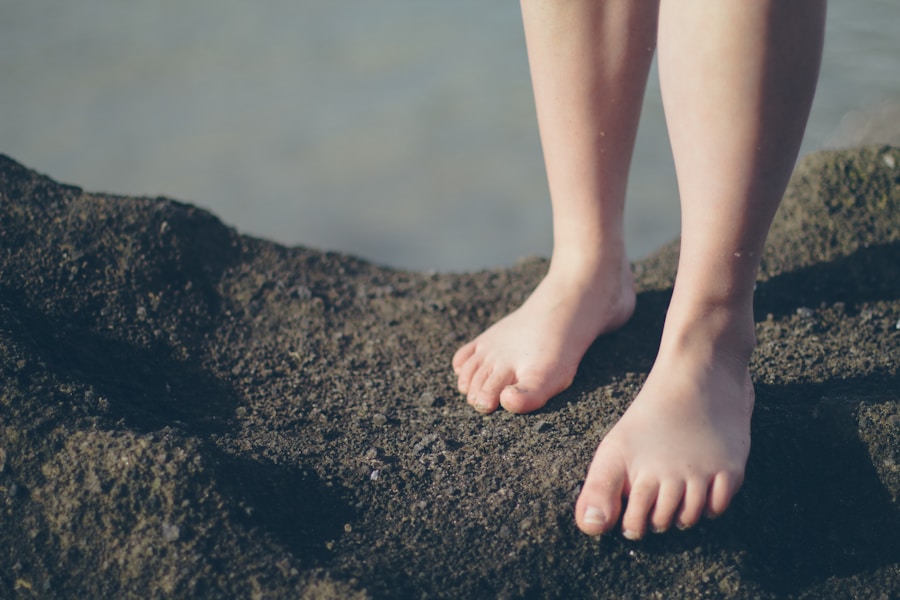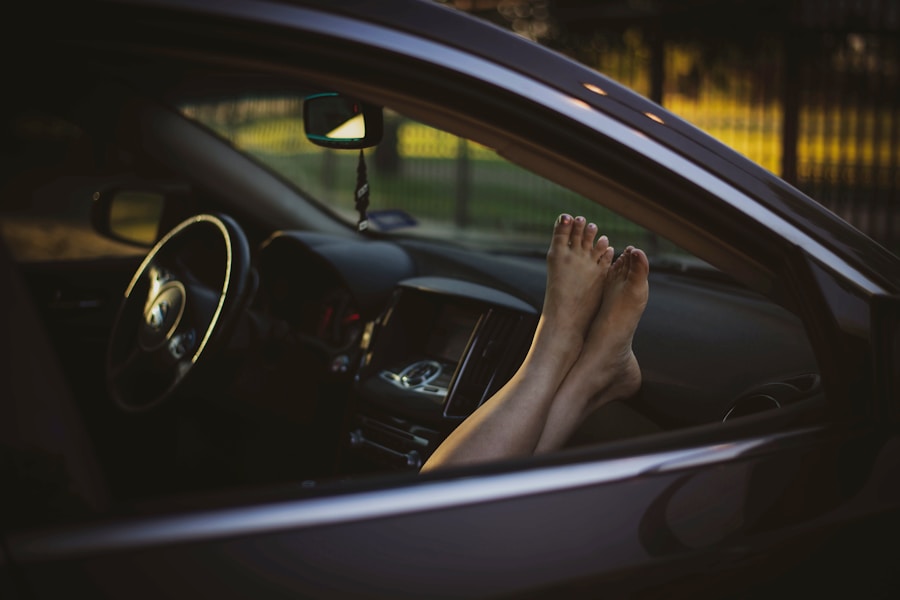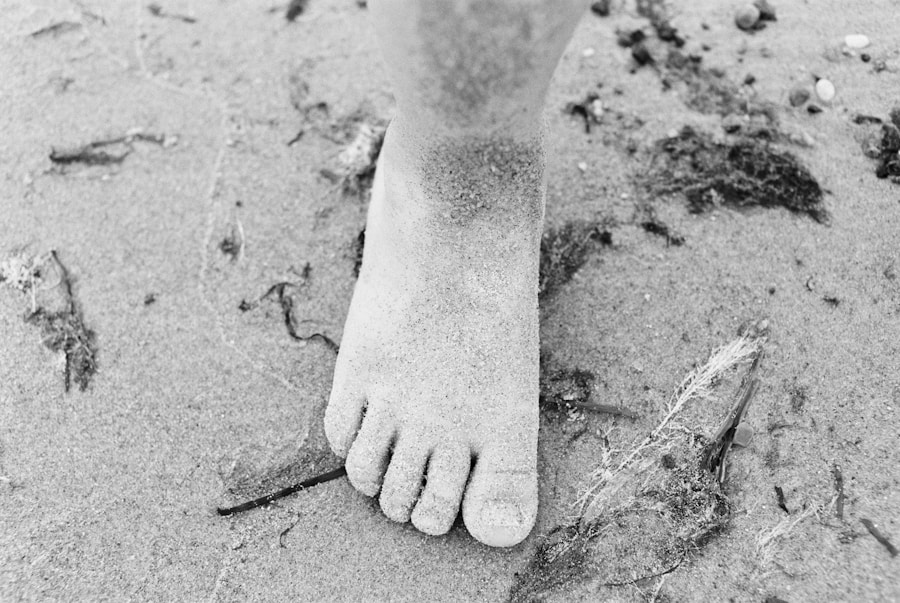Driving barefoot is a practice that has garnered attention and sparked debate among drivers, safety advocates, and legal experts alike. While some individuals find it comfortable and liberating to drive without shoes, others raise concerns about the potential risks associated with this practice.
However, the question remains: is driving barefoot safe, legal, and advisable? This article delves into the various aspects of driving barefoot, exploring its legalities, safety concerns, insurance implications, and more. The allure of driving barefoot often stems from a desire for comfort and freedom.
Many people enjoy the feeling of the wind on their skin and the direct contact with the vehicle’s controls. For some, it evokes a sense of nostalgia or a carefree attitude reminiscent of summer road trips. However, this seemingly innocent practice can lead to serious discussions about safety and legality.
As we navigate through the intricacies of driving barefoot, it becomes essential to weigh the pros and cons while considering personal preferences and regional regulations.
Key Takeaways
- Driving barefoot is legal in most places, but it’s important to consider safety and insurance implications.
- Safety concerns of driving barefoot include reduced grip on pedals and potential injury in case of an accident.
- Driving barefoot may not directly impact insurance coverage, but it could be used against you in a liability claim.
- Insurance companies generally do not have specific policies against driving barefoot, but they may consider it a contributing factor in an accident.
- Tips for driving barefoot safely include ensuring good pedal grip and being aware of potential hazards on the road.
Legalities of Driving Barefoot
Legal Gray Area
While there may not be specific regulations against barefoot driving, this does not mean that drivers are exempt from liability if an accident occurs. Law enforcement officers may view a driver’s decision to drive barefoot as a contributing factor to an accident, and it could be used against them in court.
Accidents and Legal Repercussions
If an accident occurs and it is determined that driving barefoot was a contributing factor, such as slipping off the pedals or having reduced control, it could lead to legal repercussions. This highlights the importance of understanding the potential implications of driving barefoot, even if it is not illegal in many areas.
Driver Responsibility
Ultimately, drivers must be aware that their choice to drive barefoot could have legal consequences if they are involved in an accident. While it may not be illegal, it is crucial for drivers to consider the potential risks and take responsibility for their actions behind the wheel.
Safety Concerns of Driving Barefoot

Safety is perhaps the most significant concern when it comes to driving barefoot. Critics argue that driving without shoes can impair a driver’s ability to operate the vehicle effectively. The lack of traction provided by shoes can lead to slipping off the pedals, especially in wet or humid conditions.
This loss of control can result in dangerous situations on the road, where quick reflexes are essential for avoiding accidents. Moreover, barefoot driving can also pose risks in terms of foot injuries. In the event of an accident or sudden stop, a driver’s bare feet are more vulnerable to injury from debris or impact with the vehicle’s interior.
Additionally, if a driver needs to exit the vehicle quickly due to an emergency, they may be at risk of stepping on sharp objects or hot pavement without the protection that shoes provide. These factors contribute to a growing body of evidence suggesting that while driving barefoot may feel comfortable for some, it can compromise safety in critical situations.
Insurance Impact of Driving Barefoot
| Insurance Impact of Driving Barefoot | |
|---|---|
| Increased Risk of Accidents | 10% |
| Insurance Premium Increase | 5% |
| Percentage of Drivers Who Drive Barefoot | 15% |
| Percentage of Accidents Caused by Barefoot Driving | 8% |
The impact of driving barefoot on insurance coverage is another important consideration for drivers. While most insurance policies do not explicitly mention footwear requirements, the circumstances surrounding an accident can influence claims and coverage. If a driver is involved in an accident while barefoot and it is determined that this choice contributed to the incident, insurance companies may view this as a factor in assessing liability.
In some cases, insurers may argue that driving barefoot constitutes negligent behavior, which could lead to reduced compensation for damages or even denial of claims altogether. This is particularly relevant in no-fault states where insurance payouts are determined by the circumstances surrounding the accident rather than fault alone. Therefore, drivers should be aware that their footwear choices could have financial implications in the event of an accident.
What Insurance Companies Say about Driving Barefoot
Insurance companies often emphasize safe driving practices as a key component of maintaining coverage and minimizing risk. While they may not have specific policies regarding barefoot driving, many insurers advise against practices that could compromise safety.
Some insurance companies have conducted studies or surveys regarding driver behavior and safety practices. These studies often reveal that a significant percentage of drivers believe that wearing shoes enhances their control over the vehicle. Insurers may use this data to encourage safe driving habits among their policyholders, reinforcing the idea that footwear plays a role in overall road safety.
Consequently, while there may not be explicit prohibitions against driving barefoot in insurance policies, companies advocate for practices that prioritize safety and reduce risk.
Tips for Driving Barefoot Safely

For those who choose to drive barefoot despite potential risks, there are several tips to enhance safety while doing so. First and foremost, drivers should ensure that their vehicle’s pedals are clean and free from any debris that could cause slipping. Regular maintenance and cleaning can help create a safer environment for barefoot driving.
Additionally, drivers should be mindful of their foot positioning on the pedals. Keeping feet flat and ensuring proper contact with the pedals can help maintain control and prevent slipping. It is also advisable to avoid sudden movements or aggressive driving maneuvers that could increase the risk of losing control while barefoot.
Another important consideration is weather conditions. Rain or humidity can significantly increase the likelihood of slipping on pedals when barefoot. In such conditions, it may be wiser to wear shoes for added traction and safety.
Furthermore, drivers should remain aware of their surroundings and be prepared for any sudden stops or emergencies that may require quick reflexes.
Alternatives to Driving Barefoot
For those who enjoy the sensation of driving without shoes but are concerned about safety and legality, there are several alternatives worth considering. One option is to wear lightweight sandals or flip-flops that provide minimal coverage while still offering some degree of protection and traction. These types of footwear can allow for a similar feeling to being barefoot while reducing the risk of slipping off pedals.
Another alternative is to invest in specialized driving shoes designed specifically for comfort and control while operating a vehicle. These shoes often feature non-slip soles and lightweight materials that enhance grip on pedals without compromising comfort. By choosing appropriate footwear, drivers can enjoy the benefits of barefoot driving while minimizing potential hazards.
Additionally, some individuals may opt for “barefoot” running shoes that mimic the feeling of being barefoot but provide essential protection and grip. These shoes are designed to allow for natural foot movement while still offering support during activities like driving.
Making Informed Decisions about Driving Barefoot
As we navigate through the complexities surrounding driving barefoot, it becomes clear that this practice is not merely a matter of personal preference but involves various legal, safety, and insurance considerations. While many jurisdictions do not explicitly prohibit driving without shoes, drivers must remain aware of how their choices could impact their safety and liability in case of an accident. Ultimately, making informed decisions about whether to drive barefoot requires careful consideration of individual circumstances and preferences.
By weighing the pros and cons and exploring alternatives that prioritize safety without sacrificing comfort, drivers can navigate their choices with greater confidence on the road. Whether one chooses to embrace barefoot driving or opts for suitable footwear, understanding the implications is key to ensuring a safe and enjoyable driving experience.
If you’re curious about how driving barefoot could impact your insurance rates, you may also be interested in learning more about the factors that affect your auto insurance premiums. Fairshot Financial offers a helpful article on their website that discusses the various elements that can influence the cost of your car insurance. You can read more about it here.
FAQs
Is it legal to drive barefoot?
In most places, it is legal to drive barefoot. There are no specific laws that prohibit driving without shoes in the majority of countries. However, it is important to check the local laws and regulations as they may vary from one place to another.
How could driving barefoot affect insurance?
Driving barefoot is unlikely to affect your insurance directly. However, if driving barefoot leads to an accident, it could potentially impact your insurance claim. Insurance companies may consider the circumstances of the accident, including whether driving barefoot contributed to the cause, when processing a claim.
Are there any safety concerns associated with driving barefoot?
Some people argue that driving barefoot could be unsafe as it may reduce the grip and control of the foot on the pedals. However, there is no conclusive evidence to suggest that driving barefoot is inherently unsafe. It ultimately depends on the individual’s comfort and ability to operate the vehicle safely.


